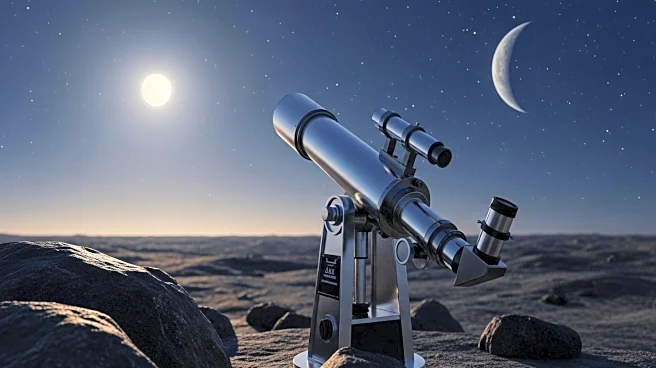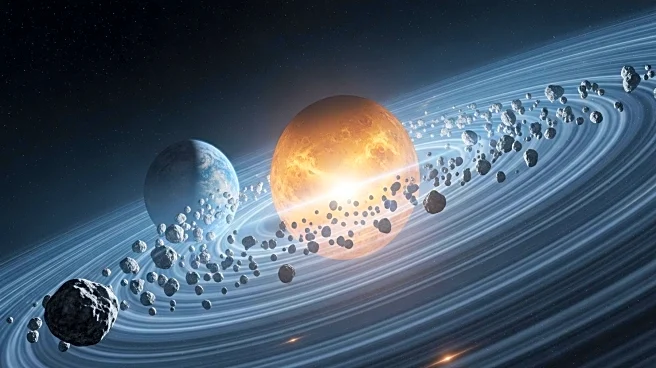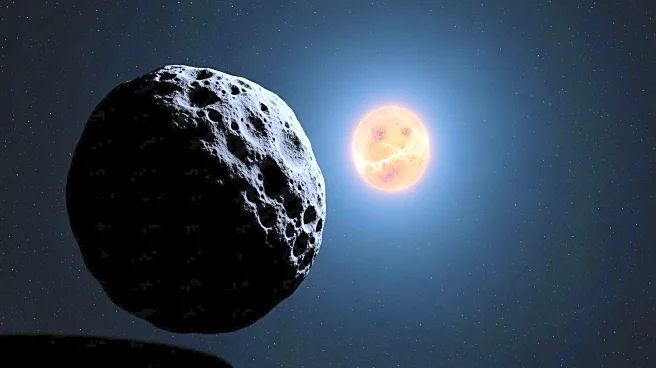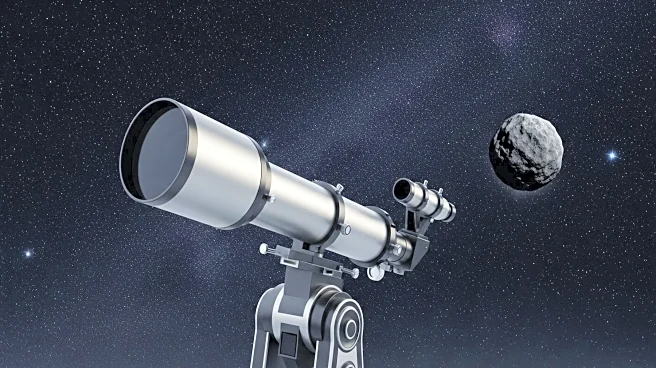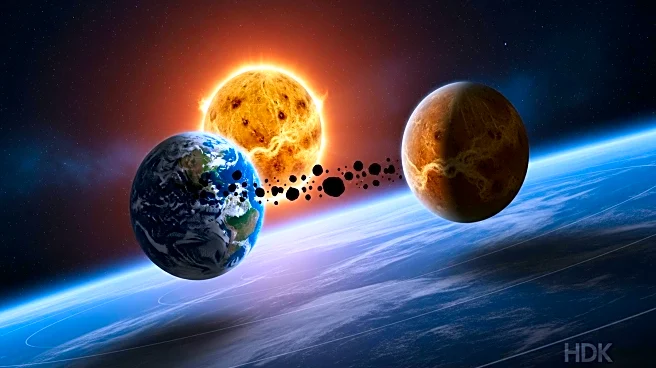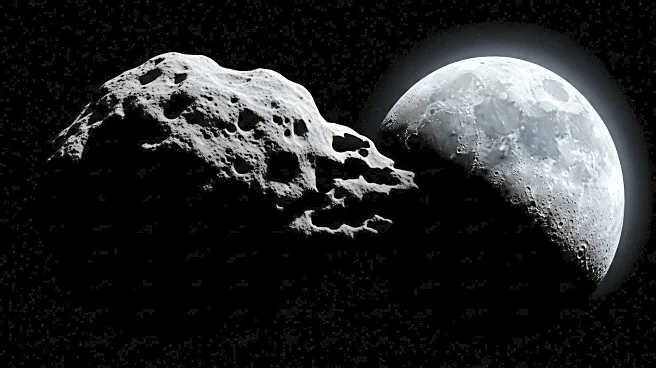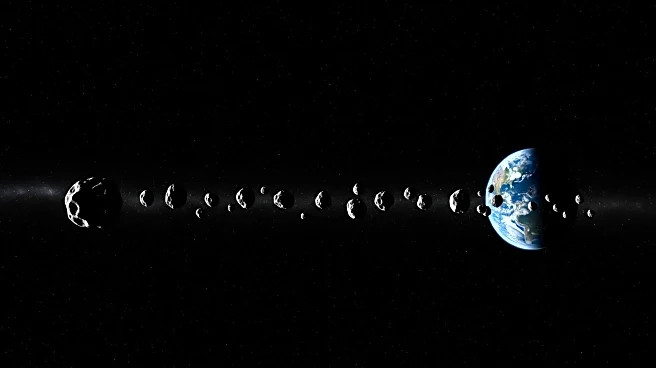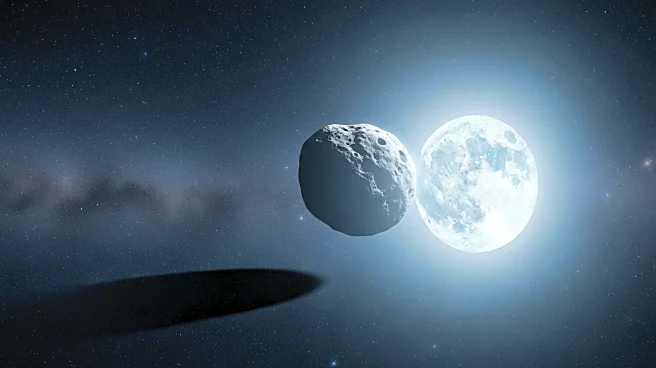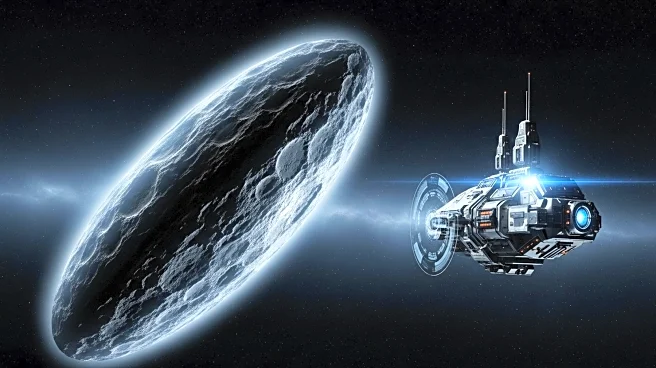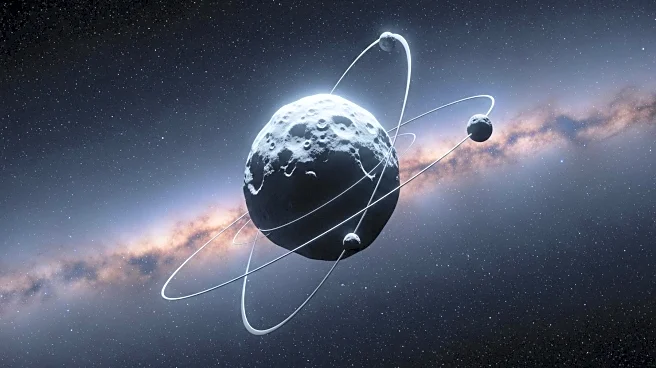What's Happening?
A study led by researchers at São Paulo State University has identified a hidden population of asteroids, known as 'Venusian co-orbital asteroids,' that share Venus' orbit and could pose a threat to Earth. These asteroids are difficult to detect from Earth due to the Sun's glare. The study, published in Astronomy & Astrophysics, suggests that these asteroids could reach Earth within a few thousand years, posing a collision risk. The asteroids have highly eccentric and unstable orbits, which could lead them to cross Earth's path. The research highlights the challenges in detecting these objects with current telescopes.
Why It's Important?
The potential threat posed by Venusian co-orbital asteroids underscores the need for improved detection and monitoring of near-Earth objects. These asteroids could cause significant damage if they were to collide with Earth, particularly in densely populated areas. The study highlights the limitations of current observational capabilities and the importance of developing new technologies to identify and track these hidden threats. Understanding the behavior and characteristics of these asteroids is crucial for planetary defense and mitigating potential impacts. The research also contributes to our knowledge of the solar system's dynamics and the interactions between celestial bodies.
What's Next?
Efforts to detect and monitor Venusian co-orbital asteroids will likely increase, with a focus on developing advanced telescopes and observation techniques. The Vera Rubin Observatory in Chile may play a key role in identifying these objects, although simulations suggest that even the brightest asteroids would only be visible for short periods. Continued research and collaboration among international space agencies will be essential to address the challenges posed by these asteroids. The study emphasizes the need for proactive measures to protect Earth from potential asteroid impacts and ensure the safety of future generations.

